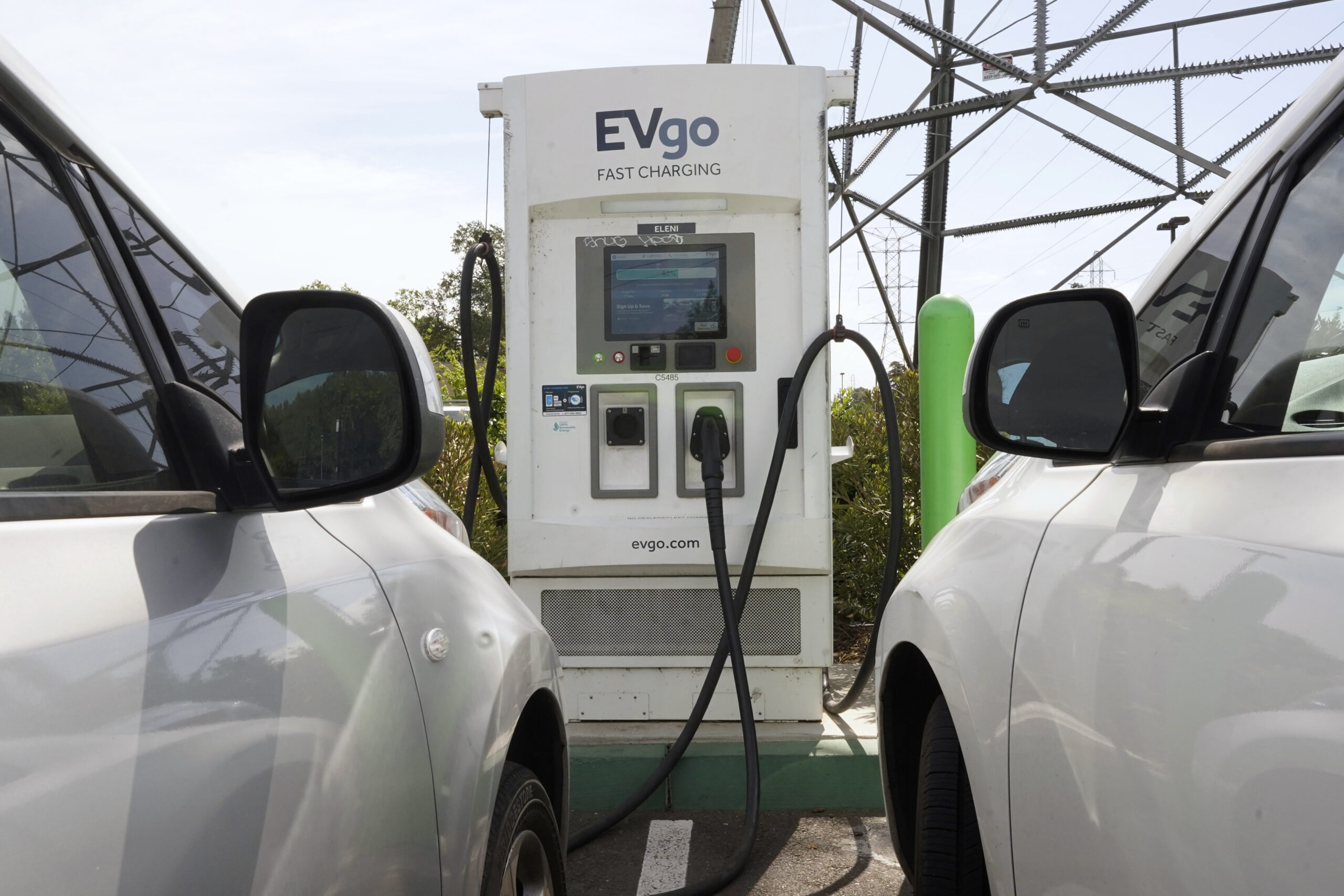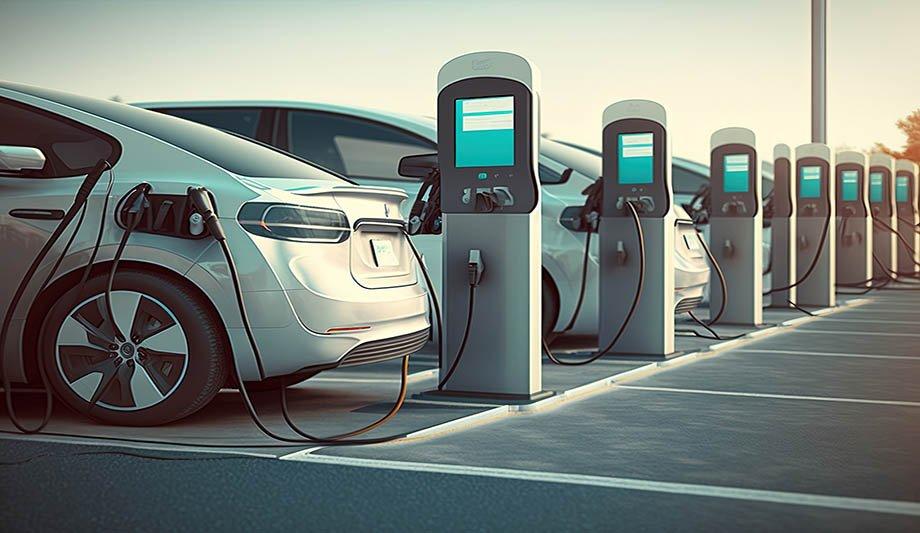Top EV Charging Information: Trick Updates on Infrastructure and Development

Recent Developments in Fast-Charging Technology

In addition, innovations in battery innovation, including boosted thermal administration systems and greater power thickness batteries, complement fast-charging abilities. These advancements mitigate the risk of battery deterioration throughout quick charging, guaranteeing long life and efficiency for EV proprietors.
Furthermore, the integration of clever charging solutions is enhancing user experience, allowing real-time surveillance and vibrant rates designs. EV Charging news. This flexibility enables vehicle drivers to enhance billing expenses and times based on grid demand
As car manufacturers continue to spend in fast-charging networks, the cooperation between market stakeholders is vital. Collaborations in between charging station providers and vehicle suppliers are leading the means for comprehensive insurance coverage, eventually cultivating a much more robust EV ecological community. These innovations are essential in sustaining the change to sustainable transport.
Federal Government Initiatives for Charging Development
Government efforts play a vital role in the growth of electric automobile (EV) charging facilities, facilitating the change to sustainable transportation. Different government and state programs are being executed to boost charging accessibility, lower the monetary worry on consumers, and promote the fostering of electric vehicles.
Significantly, the united state federal government has allocated substantial financing with the Framework Investment and Jobs Act, which allocates $7.5 billion for EV charging network growth throughout the nation. This funding is aimed at releasing thousands of new billing stations, especially in underserved areas, thereby addressing range anxiousness among prospective EV purchasers.
Additionally, numerous states are enacting regulation to streamline the allowing procedure for charging station installations, which is vital for speeding up release. Motivations such as tax obligation debts and rebates for both customers and organizations are additionally being introduced to encourage the installment of billing facilities.
In addition, public-private partnerships are increasingly ending up being a focus, leveraging private financial investment to enhance federal government financing. These efforts underscore a collective method essential for constructing a effective and detailed EV charging network, inevitably adding to a greener and more sustainable future.
Innovative Battery Solutions Enhancing Efficiency
Transforming the landscape of electric car (EV) technology, cutting-edge battery options are substantially improving performance and performance. Breakthroughs in battery chemistry, especially with lithium-sulfur and solid-state batteries, are causing raised energy density, which enables longer ranges and faster charging times. These new battery types have the prospective to exceed conventional lithium-ion batteries by providing greater capacities while minimizing weight, thereby improving general lorry efficiency.
In addition, developments in battery administration systems (BMS) are enhancing energy usage and prolonging battery life expectancy. Smart formulas monitor battery wellness and efficiency, making it possible for real-time changes to charging and releasing processes. This not just enhances the efficiency of the battery however also guarantees an extra reliable and lasting power source for EVs.
Moreover, the integration of recycling technologies is resolving the ecological effect of battery production and disposal. Developments in second-life applications for EV batteries are facilitating their use in power storage space systems, adding to a round economic situation.
As these ingenious battery services remain to develop, they promise to transform the EV market, making electric lorries much more available and enticing to a broader audience while supporting global sustainability goals.

Collaboration Between Automakers and Charging Networks
Recognizing the vital need for a durable billing facilities, automakers are increasingly collaborating with billing network companies to boost the EV ownership experience (EV Charging news). These partnerships aim to produce a smooth charging ecosystem that profits customers and sustains the shift to electric lorries
Significant auto brands are signing up with forces with recognized charging networks to expand their charging terminal coverage, making sure motorists have access to dependable and hassle-free charging alternatives. Collaborations with networks like ChargePoint and Electrify America enable automakers to integrate charging remedies directly right into their vehicles' navigating systems, leading users to the nearby terminals and supplying real-time accessibility updates.
Furthermore, these cooperations usually result in the growth of fast-charging innovations that considerably decrease the time required to reenergize an EV. By pooling resources and proficiency, automakers and charging networks can introduce quicker, producing options that meet the growing demand for electrical wheelchair.
Additionally, joint campaigns might webpage also lead to more standardized billing protocols, which can minimize customer confusion and promote broader EV adoption. Generally, these tactical partnerships are critical in building a straightforward and efficient billing infrastructure that fulfills the requirements of a broadening electrical car market.
Challenges Facing EV Billing Infrastructure
As the electric automobile market continues to expand, a number of obstacles are emerging that hinder the growth of a thorough charging facilities. Among the primary barriers is the insufficient variety of billing terminals, especially in rural and underserved city areas. This space produces array anxiety amongst potential EV buyers, preventing them from making the switch.
Additionally, the lack of standardization in billing modern technology makes complex the framework landscape. Variations in plug kinds and charging speeds can develop confusion for users and boost operational intricacies for billing network drivers.
An additional pushing concern is the high cost related to the setup and upkeep of billing terminals, which can be a barrier for both public entities and exclusive services. Governing obstacles and zoning constraints can delay the deployment of billing infrastructure, hindering progress in increasing necessary solutions. Attending to these difficulties will be critical for cultivating a robust EV environment that supports the change to lasting transportation.
Final Thought
Finally, the recurring improvements in EV billing innovation, sustained by considerable government campaigns and cutting-edge battery options, are critical for the growth and effectiveness of electric lorry imp source infrastructure. Partnerships between automakers and charging carriers even more enhance terminal protection, dealing with the growing need for easily accessible billing choices. Despite difficulties that persist within the EV billing landscape, these developments indicate a favorable trajectory in the direction of a more sustainable and effective electrical car ecological community.
Developments in charging infrastructure have led to the development of ultra-fast chargers capable of providing up to 350 kW of power, considerably lowering billing times. Variations in plug kinds and billing speeds can produce complication for customers and raise operational intricacies for charging network operators.In conclusion, the continuous improvements in EV billing technology, sustained by significant federal government campaigns and cutting-edge battery solutions, are essential for the growth and performance of electric lorry infrastructure. Cooperations between automakers and charging service providers further boost station protection, resolving the expanding demand for accessible click this link charging choices. Regardless of challenges that persist within the EV charging landscape, these growths signify a positive trajectory in the direction of a much more efficient and sustainable electrical car community.